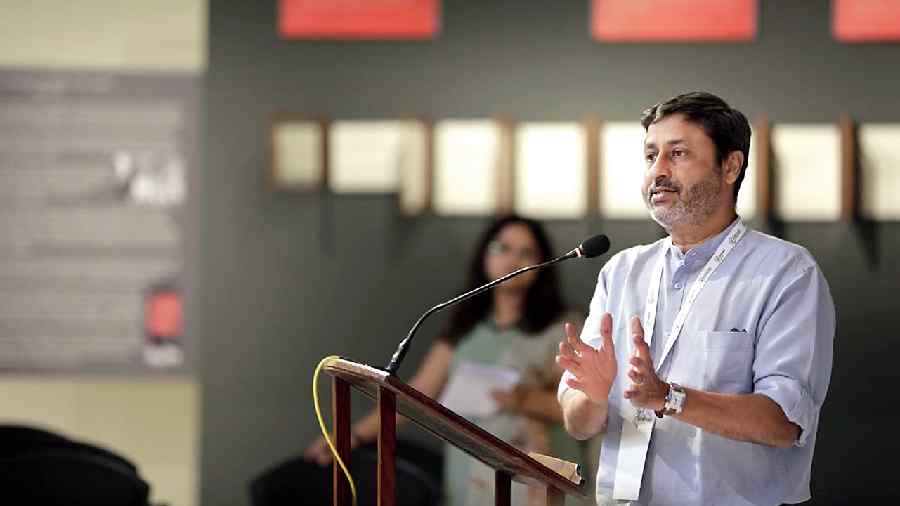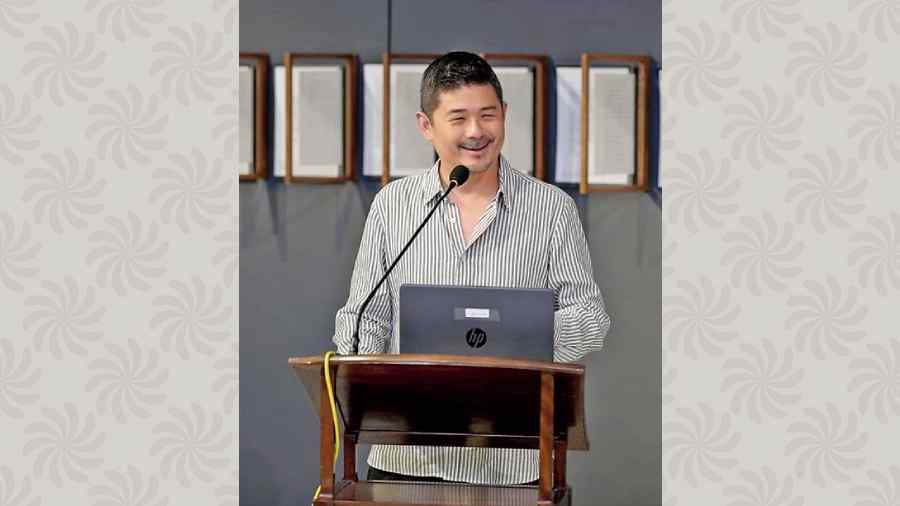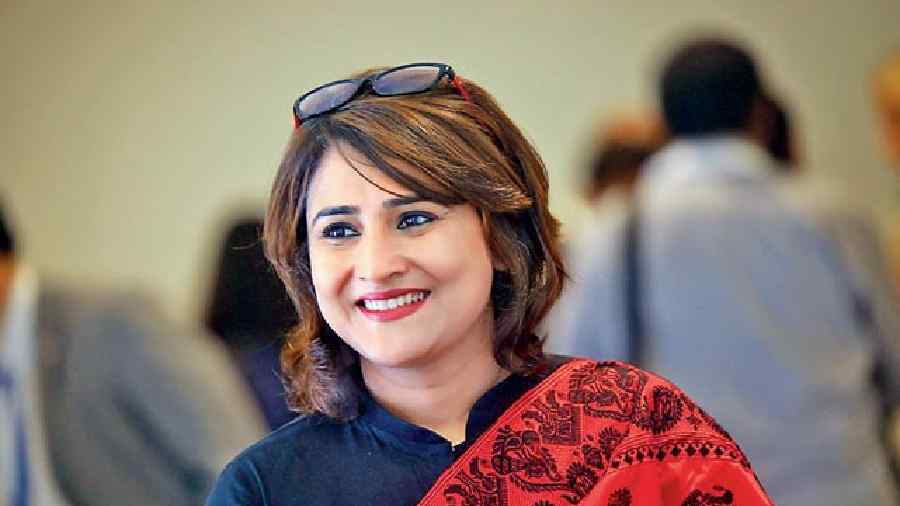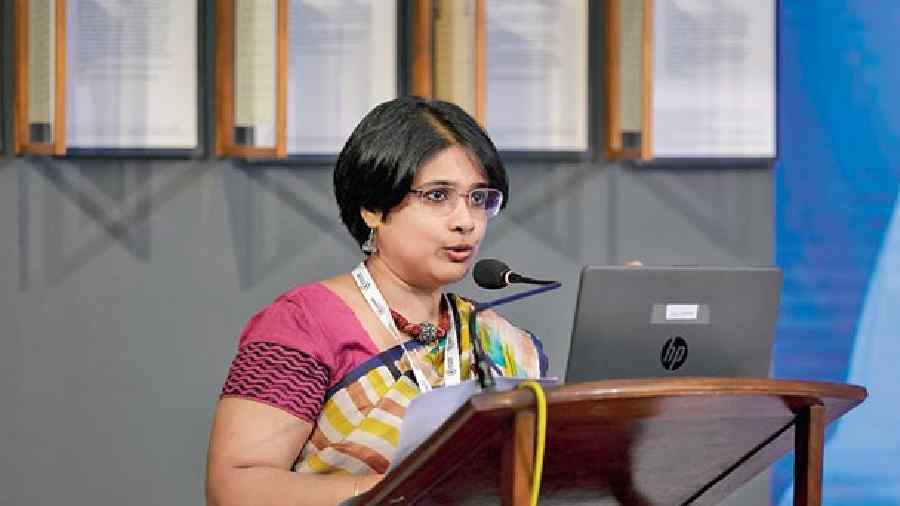The fourth edition of Kolkata Centre of Creativity’s (KCC) annual international conference Vasudhaiva Kutumbakam (VK), for the study of environmental action in the context of the Upanishadic doctrine of The World is our Home or The World is One Family was held over a period of two days, on May 7 and 8, at KCC, with speakers from India and around the world, including Netherlands, France and Switzerland. The conference commenced with Richa Agarwal, chairperson of KCC, inviting everyone to — quite unexpectedly, but aptly — disobey. And a discourse in disobedience is what ensued over the weekend with speakers from all over India sharing their experiences in challenging the accepted dysfunctional norm and questioning futile mainstream practices.
Vasudhaiva Kutumbakam’s theme this year was Solidarity in a Time of Crises. This edition of VK shed light on and initiated conversations on the 17th Sustainable Development Goal. The Sustainable Development Goals or SDGs were adopted by the United Nations as a universal call to action to ensure eradication of poverty and the adoption of sustainable measures to protect the planet for the future generations by the year 2030. Seventeen goals were adopted, which are integrated with each other. Among these, the final and one of the most crucial goals is ‘Partnerships for the Goals’. The co-curators of the conference, Shwetal A. Patel (advisor, KCC) and I, believe that the other 16 SDGs can only be realised with strong partnerships and cooperation, and a successful development agenda requires inclusive collaboration at the global, regional, national, and local levels. Partnerships between private and public bodies and different communities bring our goals closer to being achieved. When we work together, towards the same goals, we have the power to achieve more. Sharing goals also means sharing a vision. The fourth edition of Vasudhaiva Kutumbakam explored these questions in partnership with leading practitioners and experts from the fields of the arts, sciences, education, civil society and the government.

Gurudas Nulkar speaking on his session ‘Our Shared Home Vasudhaiva Kutumbakam’
A need for fostering awareness, forging unity and building cooperation towards a shared goal — that of protecting the earth and preserving a harmonious way of life on it — was felt to be the need of the hour. This conference was SDG-17 in practice as speakers spoke of their past and continuing collaborative initiatives, and planted the seed of future collaborations inspired by the discussions and debates that took place in Vasudhaiva Kutumbakam.
A wide range of sub-themes were covered, and they were increasingly layered as the sciences and the arts melted into one another, as questions of ethics and philosophy revealed themselves in social welfare ventures, and as nuanced differences in ideology created friction in the context of cultural productions. The speakers, all environmentalists at heart, came from varied backgrounds and walks of life, which enabled a holistic and potent atmosphere for the conference.

Aric Chen speaking on his session ‘Curating in Context A Practice of Many Practices’
Speakers like Ajay Mittal, while on the one hand, gave us a thorough statistical analysis of the environmental deterioration and the damaging consequences of an unbalanced capitalistic society, speakers like Pauline Laravoire presented us with a comprehensive set of tools to be more effective and efficient when striving to meet any of the SDGs. All the anxiety and work necessary to halt the climate emergency are for the future generations, and Aditi Ghose, Saket Singh Kaurav, and Subha Sankar Ghosh shared the work they are doing in that respect. Working from different wings of the National Council of Science Museums as educators and science programme curators, they attempt to bring school students emotionally and practically closer to nature through heuristic practices. Ajay Dalmia’s Drive Change Learning and Resource Centre school endeavour is actually to have just that: children in nature as a practice. His efforts have also been successful in equipping the students with real world skills, but in environmentally conscious ways.
The fact that the human economic set-up is not sustainable was brought up by the keynote speaker of the first day, Gurudas Nulkar, who elaborated on the salient points of what makes earth so special, while painstakingly pointing out the invisible work that goes in on the part of the non-human living world in keeping the planet green and blue. He also provided us with the road map necessary to change the course of impending desolation, and be on a path of healing and sustenance — the crux of which lies in emulating the principles of nature’s economy. The primary obstacles in achieving that is the absence of altruism and an insatiable compulsion to profit in the modern capitalist world order. What is necessary is the initiation of transaction sans monetary profit, and that — as Kalyan Kumar Chakravarty, art historian, academician and administrator, mentioned — can only be adopted once we think of all species and all human beings as a collective, as one community.
Thinking of ecologically sustainable communities (in terms of healthy cultural and natural environments) was a common thread that ran through most of the sessions. To broadly categorise some of the principle tenets that are embraced when working with and for communities are learning the context and story of the group (especially when it comes to economically poor and marginalised communities), being transparent about one’s motives, and keeping the community’s interests first. Ravi Agarwal, founder of the NGO Toxics Link, noted how any community-based work takes time and patience, but embracing the power of the collective only unleashed a more vigorous realm of activism.
On that note, it is imperative to mention that Chakravarty suggested to Shubha Majumder to consider involving the local communities in their efforts of maintaining heritage buildings after Majumder’s presentation on behalf of the Archaeological Survey of India expounding the challenges that restorative work faces.
The fact that humans, plural, are primary in the promulgation of any initiative is evident in the works of the artists and curators KS Radhakrishnan, Aparna Rao, Aric Chen and Divya Bhatia. While Rao, part of the duo Pors and Rao, relentlessly uses her technology and art to study the human brain and capture that unique intangible essence of what it means to be human, Radhakrishnan, one of the foremost sculptors of our time, drawing on his own practice, emphasised on the need to make art that encourages public interaction and human contemplation. Chen, director of Het Nieuwe Instituut, and Bhatia, founder of Jodhpur RIFF, both imagine and strive to realise a utopic world where they try and find answers to the question, ‘What more can be done?’ — that is, going beyond the stages of conferences, debates, and exhibitions. Chen’s session focused on some of his projects including Neonsigns.hk, an interactive, online exhibition, which explored the possibilities of what constitutes art objects. While the landscape of Hong Kong was changing and an integral part of the same, that is, neon signs were vanishing from the scene, Chen — as the curator, design and architecture, M+ (Hong Kong’s museum for visual culture) — began acquiring the neon signs which had transcended their utilitarian value and become art objects in their own right.
Bhatia spoke to the audience about his work to rehabilitate masters of Rajasthani folk music and bring them the recognition they deserve. These musicians and folk music itself were ignored in the first place because of the advent of a global capitalist mindset, which, by efforts of people like Bhatia, can hope to reverse. All their works boil down to the building block of communication, and Adrian Notz, curator of ETH AI Centre, Zurich, shared with us why that is actually radical in nature. The act of dialogue is very anarchic and subversive as a practice, because it bridges the fissures in society created by friction and mistrust, making for a just, equal, and harmonious society.
The importance of justice and equality also shone through the session on art-village project Khwaabgaon by Mrinal Mandal, director of Chalchitra Academy. The lives of the extremely marginalised, ex-‘criminal tribe’, Lodha Sabar community in a small hamlet in Jhargram, West Bengal, have been transformed for the better in just a matter of four years because a group of people actually paid attention to them and treated them with respect. Some of the effects of introducing art to that village have been the improvement in their public health, economic status, maintenance of ecology, and most importantly, their sense of being. Thus art as an act of protest was made evident — here was a group of people who were for centuries systematically marginalised and excluded, and their very feat of thriving becomes, yet again, a testament to the collective power of the people.
Parmesh Shahani — LGBTQI+ inclusion advocate, award-winning author, curator and former head of Godrej India Culture lab — the keynote speaker of the second day actually (albeit unwittingly) summed up a lot of the important themes that ran through all the speakers’ sessions while presenting his. He highlighted the importance of taking intersectional politics (and the members of those communities) into account, and keeping the changing contexts in mind when embarking upon curating culture. It was of paramount importance to him that the aim of every project should be service — serving the margins. Imagining future Indias still remains an idea close to his heart.
That has also been one of the framework units of Vasudhaiva Kutumbakam — to imagine a better world together. The conference was a resounding success as the discussions and debates led to impromptu sessions and on-the-spot conceptualisation of future collaborations. It is indisputably true for the members of the audience, but even the speakers agreed how they were going back much more enriched than they were two days prior. It was heart-warming to know about all the good work being done across the country, and the conference truly proved how sustainability is a democratic process.

Reena Dewan
The author is director at Kolkata Centre for Creativity
